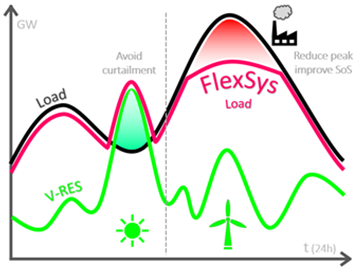Goal
Phasing out our fossil energy use is essential for the success of the energy transition. This implies a complete electrification of the final energy consumption, with the required electricity being generated from sustainable energy sources.
The combination of growing electrical consumption combined with ever increasing intermittent renewable energy generation, however, poses challenges to the balance of our electrical system and the security of our energy supply. During moments of high energy use but low availability of renewable energy, e.g. winter evenings, the most expensive and polluting fossil energy generators need to be active in order to fulfill the peak consumption. Conversely, during moments of low energy use but high availability of renewable energy, e.g. summer days, the excess energy will have to be curtailed.

Yet, the growing electrification, driven by assets such as heat pumps, electric vehicles and battery energy storage systems also contains the root of the solution to these problems. If these assets can be made intelligently controllable and responsive to energy market signals, they can be turned from a system liability into a system asset.
This demand side flexibility has already been demonstrated at industrial level. Extending that role to small-scale distributed assets such as heat pumps and electric vehicles is however not yet thoroughly investigated. Many barriers of technological, legislative, economic or organisational nature still remain to be solved.




